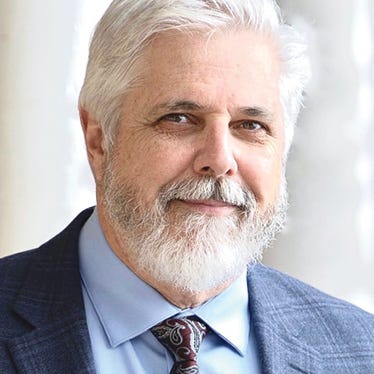May 7, 2024

We normally talk here about stories from American farms, and rightly so.
But this month, with some help from our European colleagues, we’re flipping the switch to find the story inside the troubled, complex European Union farm scene. Europe is a significant trading partner, and the drama surrounding farming that’s unfolded recently across the entire continent is alarming.
It’s an election year in Europe — next month, in fact. Through the late winter and early spring, angry and sometimes violent farmers protesting in the streets underlined the angst being felt there. Farmers say they’re drowning in unreasonable environmental regulations and unfair competition from their neighbors (not from us, for a change). They’re upset with prices, as are consumers.
Against this backdrop, activists opposed to modern farming and technology are having a heyday, generating hysteria by claiming that Europe’s small farmers are being forced into “industrial” agriculture to survive.
“Small” is the key word. The EU has a whopping 9 million farms (officially called agricultural holdings). And of these, about two-thirds are less than 5 hectares.
That means farms are everywhere — always have been — and Europeans embrace them culturally. The government is desperate to shelter them from economies of scale.
But how can the EU support 6-ish million small, struggling farms, whose operators are facing price and input challenges like bigger farms, but with fewer management options to mitigate risk?
Can’t turn back the clock
In Brussels, the European Network of Agricultural Journalists assembled top-drawer experts for a live and online symposium to find ways to support farmers while also meeting consumer and retail demand.
A featured speaker was acclaimed Irish agricultural economist Alan Matthews, who said trying to squeeze the market for money is foolish.
“There is a belief that somehow in the supply chain there’s a pot of gold that farmers could get their hands on in order to increase their prices,” he said. “I would argue that is debatable.”
Instead, he suggested “targeted budgetary measures combined with regulation [to resist] mega farms, which are considered to be more polluting.” He cited specific survival approaches such as high-value output production, diversification and premium market identification, low-input ecological farming, regenerative agriculture, cost sharing with neighbors, and off-farm employment.
He was also clear that Europe can’t turn back the clock on farm consolidation and admitted some small farms will disappear.
So did Jean-Luc Demarty, former director general of trade for the EU. Symposium moderator Damien O’Reilly was visibly surprised that a former architect of European agricultural policy would suggest the EU had failed millions of farmers. Demarty couldn’t deny it.
“Many small farms are not viable,” Demarty said. “We need to move in the direction of farms of sufficient size. But I mean family farming, not industrial farming.”
Angry European farmers will not be placated by being told to capitulate. Ironically though, despite the disdain for U.S.-style “industrial farming,” they can look here for successful models and a way forward.
In Illinois, for example, 96% of farms are family farms. They, too, started small. And today, they’re a heck of a lot bigger than 5 hectares. Yes, they have their struggles. But they also prove that growth doesn’t compromise family values.
About the Author(s)
You May Also Like






